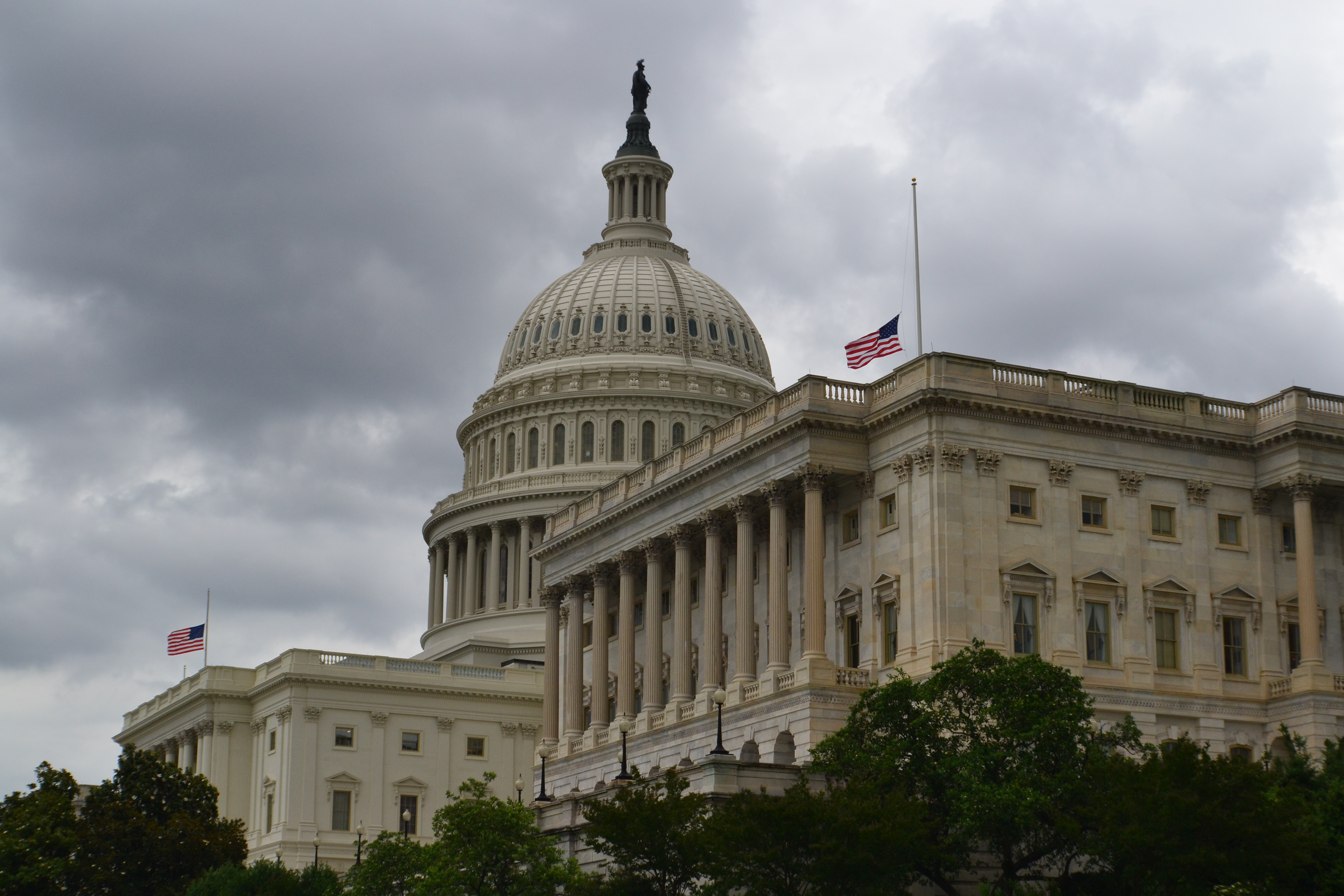Drag Queens and the Queering of the Church
Sign up for a six month free
trial of The Stand Magazine!
It’s Sunday morning at a progressive church. The pastor introduces himself, states his preferred pronouns, welcomes the congregants, and then announces the arrival of the guest preacher—the drag queen performing under the name of “Ms. Penny Cost.” It is explained that Isaac Simmons (the man in drag) is a first-year seminary student and candidate for ordination in the United Methodist Church. Simmons will explain why he “gets dolled up” during the children’s sermon, before delivering a message to the whole congregation denouncing capitalism.
This is not the beginning of some pretentious short story from freshman English class. It is, in fact, a real event with real people taking place in a real United Methodist church. And things like this will continue to happen in the days, weeks, and years ahead.
Drag Queens in Public Life
Once an obscure part of the gay subculture, men dressing up as drag queens have now become a common feature of pop culture. They are, of course, featured prominently in Pride parades and other LGBTQ+ celebrations. There are a number of current TV shows focused on drag, like RuPaul’s Drag Race (VH1), We’re Here (HBO), Call Me Mother (OutTV in Canada), Queen of the Universe (Paramount+), and Legendary (HBO Max). Drag queens have also found their way into elementary education, with book readings and other “family-friendly” drag events offering ways that children can interact with these performers. With this comes the inevitable controversy and backlash, fueling news stories across the media landscape.
Since drag queens have been mainstreamed, is it any surprise that there would be churches wanting to feature them in worship services? Is it any surprise that a seminary student would want to dress up in drag to present his screeds against capitalism and “queerphobia” to the church? Certainly not. “In the last time there will be scoffers, following their own ungodly passions” (Jude 1:18).
What may be surprising for Christians, is that this is not accidental. The normalization of homosexuality leads to greater degrees of decadence and debauchery—not simply by laws of entropy but by concerted efforts on the part of activists to attack the image of God in man. The rise of drag queens in public life is a defiant attempt to queer our children and the church of Jesus Christ.
What is Queering?
Some readers may remember a time when the word queer simply meant odd or strange. Most may still remember when queer was considered a pejorative slur for a homosexual. However, nowadays, queer has become an identity label as well as a point of pride and celebration. Hence the Q in the LGBTQ+ acronym. Queer can be a collective label for anything within the LGBTQ+ spectrum—that is, any person or thing that falls outside heterosexual or stereotypical gender norms.
As academic scholars began using the word queer to define their radical social theories, the word gained additional power. These theories were aimed at elevating non-traditional sexuality and fighting ways that heterosexuality is normalized or considered good in society. One way of combating what these scholars labeled heteronormativity was by a specific disruptive process of queering. Through this use, queer had become a verb, an action.
Queering is intended to complicate and disrupt what is perceived to be normal. As an action, it is the use of words, actions, or representatives to directly challenge heterosexuality, traditional gender roles, or the male/female binary. What is normal is sometimes described as binary—such as identifying as a man or a woman or even presenting yourself as a man or woman.
Here is how queering is defined in the Encyclopedia of Diversity and Social Justice (Rowman & Littlefield, 2015):
Queering is one strategy for queer activists who want to unsettle or complicate normative practices, spaces, or discourses. Introducing queer bodies into normative spaces, for instance, changes the dynamics of that space by unsettling the taken-for-granted characteristics of that space. Drag queens might “take over” a “straight bar” in order to queer the space, or complicate what that space means to the people inhabiting it.
The purpose is to disrupt foundational assumptions about sex and gender and, thereby, transform social norms by offering new possibilities. These possibilities do not have to be the new normal in themselves, but they work to move people’s sensibility toward accepting queerness as normal by offering a counterpoint to it. This can even be seen in the rise of the terms nonbinary and genderqueer, used to express a person’s inner feeling of gender identity. Whether discussing gender or sexuality, the binary is rejected in favor of a spectrum. Queering is intended to help people see the various colors of this spectrum.
This may sound very abstract, so an illustration is in order.
Drag Performance as an Act of Queering
Drag performance itself is an act of queering because of its attempt to complicate and unsettle binary depictions of sex and gender. This can be seen even with the complicated use of pronouns which dismantles order and clarity. As in the case of Isaac Simmons/”Ms. Penny Cost,” Isaac has one set of pronouns (they/them) and a different set when dressed in drag (she/her). The drag persona is singular while the real person underneath is plural. The fact that the pronoun protocol is outlined at the beginning of each presentation only adds to the chaos.
But the queering goes deeper. Consider the way Drag Queen Story Hours have become a feature of education in recent years. These are events where a drag performer reads storybooks to young children in a school, library, or bookstore setting. The Drag Queen Story Hour website proudly declares that through these events “kids are able to see people who defy rigid gender restrictions and imagine a world where everyone can be their authentic selves!” The purpose is to stretch a child’s imagination to include drag queens as normal. Where a child may think it wrong or strange for a man to dress as a woman, the drag performer gives a visible (and potentially fun) counterpoint to that latent assumption.
According to the theory that undergirds these efforts, the act of having drag queens read in a library or school has effectively queered the space. As the theory stresses, this is supposed to help the child become more accepting of all LGBTQ+ expressions—including those the child may develop later. Not all drag performances are brazenly sexualized but the very act of drag—especially where the maleness of the female impersonator is particularly recognizable—is intended to pervert. That’s the point. This doesn’t even mention the frequently sexualized performances that have been documented—which is why many conservatives have labeled the practice “grooming.”
This same theory was earlier employed at the college level by sociology professor Steven P. Schacht. Before his death, Schacht took over 300 students to drag performances in order to challenge their traditional views. He reported that it was a highly effective method of giving his students an “experiential appreciation” of gender performance, with an ultimate political goal in mind: “Equality will not be realized until non-dichotomous, truly new ways of relating to others are envisioned and acted upon.” In other words, drag helps us envision a new world.
This is the heart of queering.
Queering the Church
The appearance of “Ms. Penny Cost” at Allendale United Methodist Church is evidence that the practice of queering is now entering some church settings as well. In one sense, this is to be expected. After all, embracing gay-affirming theology will eventually require further participation in activism in order to prove one’s commitment to the LGBTQ+ cause. As one author said, “Queer Christians deserve a queer theology that is not just inclusive but takes into account their distinct experiences.” How can these “distinct experiences” be shown without bold attempts to feature public expressions of queerness by those who identify as queer?
But in another sense, it is surprising to hear of a drag queen leading a church service because it is so obviously antithetical to sound doctrine and reverent worship of the God described in Scripture. But this is exactly the point of queering: it is meant to disrupt, surprise, and shock those who adhere to biblical orthodoxy. It is defiant, abrasive, and transgressive—by design. As queer theologian Robert Shore-Goss triumphantly declares in Jesus Acted Up: A Gay and Lesbian Manifesto:
Fundamentalist and literalist Christians traffic in the production and commerce of certain truths, but doubts, ambiguities, pluralities, and complexities will bring their fragile discursive edifice of fundamentalist truth to an end in the area of public discourse and curtail its harmful effect to those who are sexually different.
This act of queering the church may take many different forms. One form is through the use and promotion of queer theology. Queer theology presents shocking takes on theological ideas that are intended to elevate LGBTQ+ experience. One example is when Brian G. Murphy (of QueerTheology.com) declares that sexual promiscuity is a reflection of God’s love and Christian hospitality—where a person is “welcoming the stranger—into your home, or the backseat of your car, or even your body.” The purpose here is not simply to justify promiscuity but also to attack the traditional way Christians think.
Another form of queering the church is through the process of queer readings, whereby a work of Christian literature is read through a queer lens in order to pull new possibilities from the text. This can be seen in Keegan Osinski’s recent book Queering Wesley, Queering the Church (Cascade Books, 2021) where the sermons of John Wesley are queered in order to show that the queer perspective is “consistent with the broader thrust of Wesleyan theology and practice.” This includes a redefinition of holiness, where queerness itself becomes “not only compatible with holiness freshly understood, but also a truly fruitful and beneficial piece of a broader picture of what holiness can be.”
Queering the church can also take the form of a drag performance in the middle of Sunday morning service. The presence of the performer is intended to complicate the expectations of who can or should lead a worship service and who is given an opportunity to speak in church. Isaac Simmons (the name of the man who plays “Ms. Penny Cost”) said as much in his message:
We are here to learn and to grow and to deconstruct and to reimagine what church can be, who church can be for, and how church can feel together. It can be a place unafraid to denounce queerphobia, a place unafraid to name the sin of racism and to call for the end of white supremacy. A place where all have equal and equitable access, not just to the pulpit itself, to the sanctuary, but to God themself—and all that it represents within the community.
Conclusion
Understand that queering is wicked and is intentionally designed to blur the lines of right and wrong, natural and unnatural, male and female, objective truth and subjective experience, and beyond. It is meant to make people more accepting of LGBTQ+ at an emotional level. It is a spiritual attack made manifest in the flesh—with makeup, heels, and wigs. Christians are completely right to oppose it.
One drag queen, who goes by the name “Kitty Demure,” scolded foolish and naïve parents for promoting Drag Queen Story Hour events:
Would you want a stripper or a porn star to influence your child? It makes no sense at all. A drag queen performs in a nightclub for adults. There is a lot of filth that goes on. A lot of sexual stuff that goes on. And backstage there’s a lot of nudity, sex, and drugs. Okay? So I don’t think this is an avenue you would want your child to explore.
This comment exposes the darkness underneath it all—and the deep personal brokenness that even brings about a desire to perform and parade around in this way. It is worthy of pity and prayer. Pray for repentance! Pray for revival! Pray that the Lord would be merciful and show Himself mighty to save to the uttermost! Yet, there are souls at stake. There is Christ’s honor at stake. These things must be fought against—with vigor and courage.
Yet many Christians have been ashamed to speak up and there are some evangelical leaders who—even now, with the debauchery before their eyes—insist that Christians just need to quiet down, hold their peace, and love their neighbors. This kind of false dichotomy between loving our neighbors and standing for righteousness needs to stop. Whatever is ultimately true is ultimately good and to want our neighbors to be spared the onslaught of sexual confusion and decadence is certainly a very loving—and righteous—response. Many Christians need to repent of rejecting the truth through dozens of tiny accommodations and nuances.
Whether it be drag performances in a church, bookstore, public school, or civic event—the normalization of drag is grievous and the Lord will not be mocked, even as femininity is mocked by these performers. The wrath of God is coming. And woe to those churches who call what is evil, good—who parade it as righteousness before a lost and dying world. “Ms. Penny Cost” is a clear illustration of why many United Methodist Churches and ministers are choosing to disaffiliate from the rapidly eroding mainline denomination. Free from the restraint that the righteous men and women of that denomination have brought thus far, we will soon see what happens when the biblical witness is completely removed.
The American church in 2022 would do well to remember the fuller statement of the apostle Jude:
But you must remember, beloved, the predictions of the apostles of our Lord Jesus Christ. They said to you, “In the last time there will be scoffers, following their own ungodly passions.” It is these who cause divisions, worldly people, devoid of the Spirit. But you, beloved, building yourselves up in your most holy faith and praying in the Holy Spirit, keep yourselves in the love of God, waiting for the mercy of our Lord Jesus Christ that leads to eternal life. And have mercy on those who doubt; save others by snatching them out of the fire; to others show mercy with fear, hating even the garment stained by the flesh. (Jude 1:17–23)
May the church of Christ stand boldly against the godlessness of a society bent on bringing God’s judgment. Come quickly, Lord Jesus.
[EDITOR’S NOTE: To learn more about the ways the LGBTQ+ movement has impacted the church, the book Dangerous Affirmation: The Threat of “Gay Christianity” by M.D. Perkins is NOW AVAILABLE]

Sign up for a free six-month trial of
The Stand Magazine!
Sign up for free to receive notable blogs delivered to your email weekly.



















